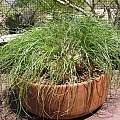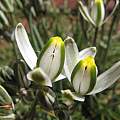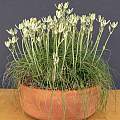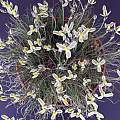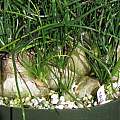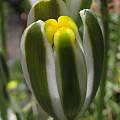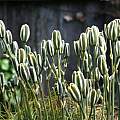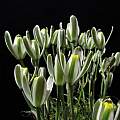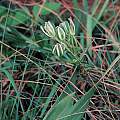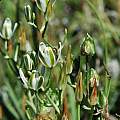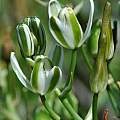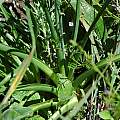Albuca sp. 'Augrabies Hills' (ex. Arid Lands?) is a commonly sold plant. Its place of origin and species have been the subject of a PBS list discussion highlights of which can be seen below.
Dylan Hannon reported that he received plants from Arid Lands Greenhouses and was told they were grown from seed collected in the Aughrabies Hills. This is a dry area in the northwest Cape near the southeastern Namibian border. Augrabies falls is a waterfall on the Orange River, in the northwest Cape near the Namibian border; the native people called it the "place of big noises" from which the settlers derived the name 'Augrabies', sometimes written 'Aughrabies' and applied it to various features in the area stretching West. The plant that everyone grows resembles an Eastern Cape species, Albuca polyphylla. Nhu Nguyen examined his plants and found that they keyed out very closely to the description for that species. One difference, however, is that that plant according to Elsa Pooley in Mountain Flowers does not have yellow on the tepals. If seed for this plant was collected in the area that it was reported to be collected in it couldn't be Albuca polyphylla since it doesn't grow there.
Until we have formal confirmation of where the seed was collected or dna confirmation of what it is, we are retaining it as an unknown species on the wiki.
It is one of the most commonly cultivated species of the genus. It can be found in many cactus and succulent nurseries. The plant has leaves that are thin (~1mm thick), glabrous, somewhat fleshy in texture, narrowly channeled where it looks almost terete. The inflorescence is about 8 inches (or 20 cm) tall with a glaucous peduncle. Each inflorescence holds 3-4(5) flowers. The flowers are similar to a few other species, except that the bulbs of this species are raised above ground and the flowers bloom when leaves are present. This is a tough species that can take various treatments from very warm temperatures to very dry conditions for extended period of time. It probably cannot stand a deep freeze because of the exposed bulbs. Pamela Slate grows her plants in Arizona under 50% shade cloth. Nhu Nguyen grows his plant under full sun in the Bay Area. It receives water year round and blooms at least twice a year. It pups prolifically and within a few years a few bulbs can multiply to the size of Pam's specimen seen below. It likes a well drained but rich organic mix (1:1 organic:inorganic works well). Give it a little bit of fertilizer during active growth. Photos 1-4 were taken by Pamela Slate of a plant in a 12 inch pot.
The photos below were taken by Nhu Nguyen.
Albuca sp. Maclear was photographed January 2010 by Bob Rutemoeller, in Maclear, Eastern Cape.
Albuca sp. Gaika's Kop the photos were taken in January 2010 by Mary Sue Ittner, in Gaika's Kop, Eastern Cape. It could be Albuca nelsonii, a robust evergreen species found on grassland and rocky slopes in southern Africa.
